Or how to repair a Raymarine knot-meter with a potato………..
Blue Haven Marina, Providenciales, Turks and Caicos, July 1-3, 2013
Our knot-meter had become increasingly unreliable over the past few weeks. It finally stopped working all together (despite multiple reboots).
A search of the internet revealed that we could check the transducer by disconnecting the wiring and measuring the on / off pulses with a multi-meter while someone (Jane) spun the paddle wheel. We got the pulses! This suggested that the instrument itself had gone bad. The local Raymarine dealer did not have one. It looked like a $350 eBay purchase and logistics planning to get it to wherever we next will be.
Before pulling the trigger on eBay, a quick call to Raymarine UK was made. [Aside: After a slow call to Raymarine USA left me on hold for 40 minutes.] It turns out that the transducer also measures water temperature. If the thermocouple dies, the instrument stops measuring speed as well as temperature. If this is the problem, the solution is to short the thermocouple with a 10-50kΩ resistor.
We drove all around the Providenciales in search of a resistor. Despite scouring a dozen shops, they were nowhere to be found. Luckily Pete had a Eureka moment; he remembered from a high-school science project that potatoes have resistance!
The potato was duly inserted into the circuit:
Prototype number 2:
Unfortunately dimmer switches are no longer rheostats and the resistance was much too high.
Finally:
But the temperature reads128°; warm even for the Caribbean.

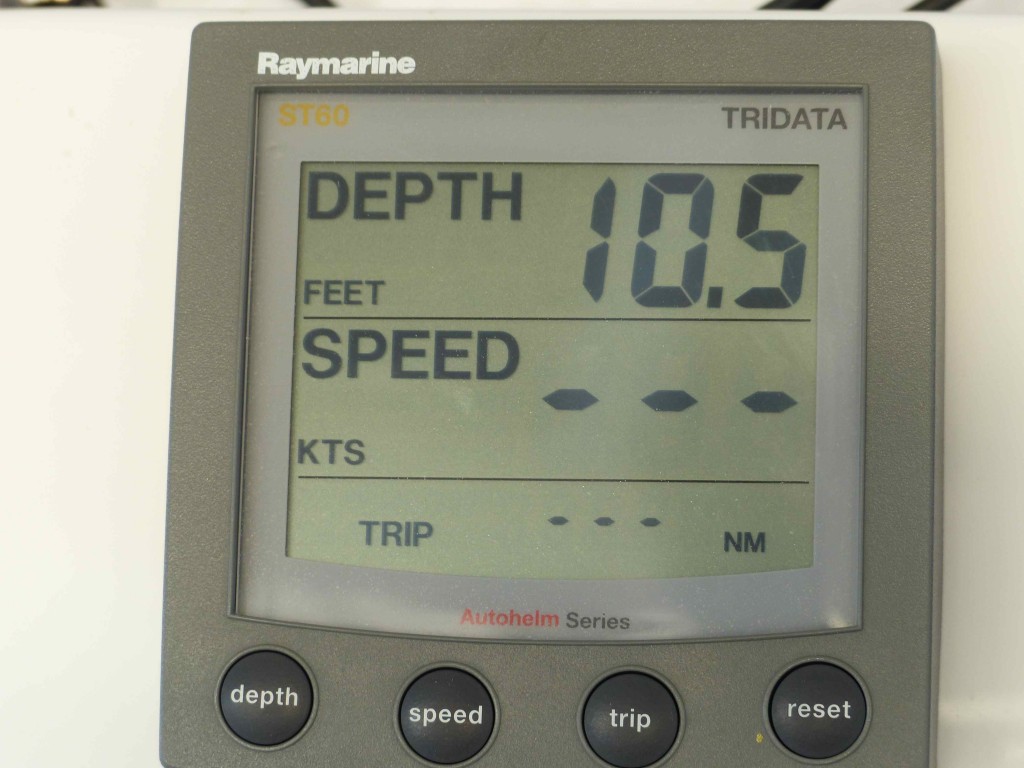
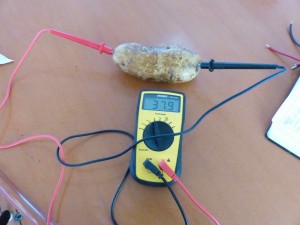
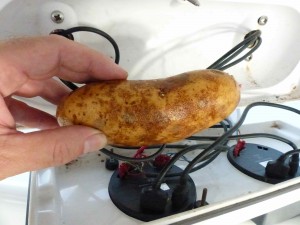
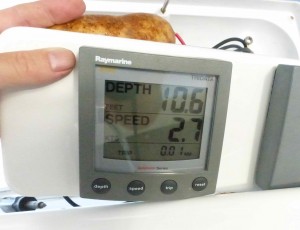
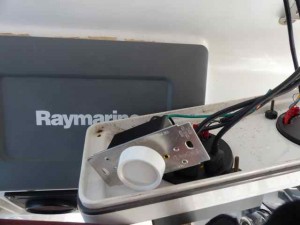
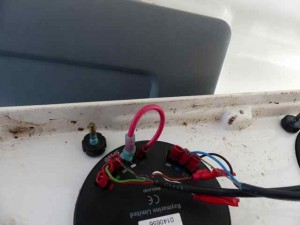
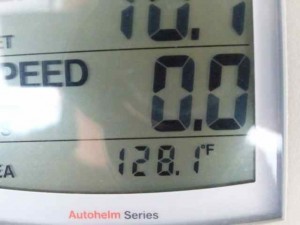
Hackers. Nice work!
That’s a great electric idea for our middle school activity for our summer science class!
We are having a heatwave fourth of July. I am going to go to the Marin County Fair to BROIL with the other potato heads! Only united states folks go out in the noonday sun to walk amidst horrendous hordes.
but I like it……sweaty photos to follow.
Brilliant!
Brilliant Wopper!
Wow, MacGyver himself couldn’t have been more resourceful. Looks like Global Warming hit Turks & Caicos pretty hard though :-), be careful on those spa dives!
A couple of comments. It is possible that the transducer is working but you have a cable fault. An easy way to test is to check the signal (brown and white) at the transducer. Assuming the transducer is a two-wire RTD (given the need for a substitute resistor), the transducer should give a reading of between 100 and 110 ohms (corresponding to a 32F – 78F range).
NOTE: RTDs are inherently durable, so I would be surprised if it failed.
If you get an acceptable reading, then you might want to troubleshoot the cable. If the RTD has acutally failed, you’ll need a new transducer. Your transducer model appears to be E26031 (formerly M78712). Let me know if you need help getting a replacement.
Just in case you don’t have an owners manual (or you want an e-version), I have made it available at the link below:
https://app.sugarsync.com/iris/wf/D7039155_3145498_6128908
As far as I’m concerned, Wopper’s name is now changed to Spud.
Thanks for the suggestions and offer.
These Raymarine combined speed and temperature transducers are notorious for the temperature side failing (although not usually with an open circuit). I also suspect the wiring. Unfortunately the wire at the transducer end is sealed in epoxy (as its sitting in the bilge). Water temperature is not information we need (it has never told the correct temperature anyway), and installing the wire run for a new one would be a serious pain, so we’ll stick with what we’ve got for now (although I may invest i a 10k resistor).
So let’s see if I got this right. Mr. Potato Head helped you discover you were knot going anywhere (fast). You were possibly drifting toward an erupting underwater volcano because it was so hot. Does the sequel involve a makeshift variable temp french fry-o-later (thanks to dimmer switch)?